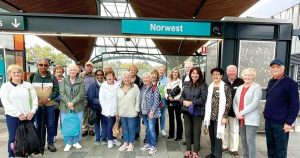We’ve heard the alarms sounding about the loss of biodiversity, accelerating our plant and animal species toward extinction. We also hear of plants and animals making comebacks, like the evidence of Koalas returning to Maroota and Marramarra. We have hope and we have strategies to boost and support the Biodiversity we have left.
Native Plant and Wildlife Corridors are the new arteries for the survival of native plants and animals, linking small isolated communities and allowing an opportunity to thrive and spread.
To be effective and meaningfully help, we need to understand the things that make a good corridor and the practices that maintain them.
The things that make good corridors locally and why:
• Native grasslands provide habitat and pasture, good for both Livestock and Wildlife.
• Roadside and fence line plantings to link core habitats and form a weed barrier for your property.
• Native trees in paddocks as stepping stones linking core habitats give shade to your livestock and retain groundwater.
• Native plants in Parks and Gardens as habitat for wildlife, birds are great for controlling insect pests.
• Large patches of native vegetation left to provide core habitat, a safeguard for future generations.
• Buffers around larger patches of native land, protecting it from weed invasion and external threats
• Corridors that link together to support long distance migratory species.
Land management practices that help wildlife corridors:
• Restore degraded land with local native species, especially where near core native habitats.
• Local governments having ‘connectivity conservation’ in land planning and management
• Landholders creating biodiverse gardens friendly to wildlife
• Assist landholders to manage habitat threats with Grants for Natural resource management.
• State and Local Government plan and manage Roadside vegetation to connect core habitats.
• Look at your land holistically, see where it sits in the landscape and plan accordingly.
• Plant to support the Biodiversity and contribute to long-term carbon stores
• Plant Paddock trees or Paddock islands to shade livestock, retain groundwater and to protect and help natural regeneration
• Watch and act on invasive species to keep landscapes healthy and safe
If you would like help or more information on caring for your land contact Nick on 9653 2056 or visit Still Creek Landcare at http://www.stillcreeklandcare.com.au or on Facebook.









